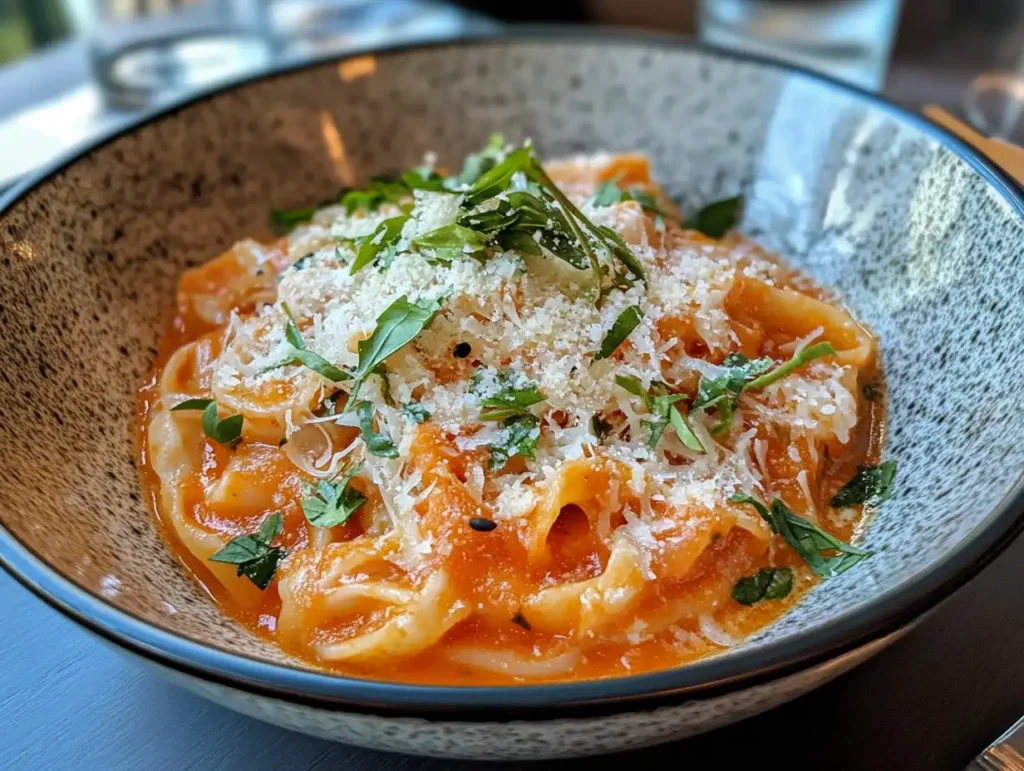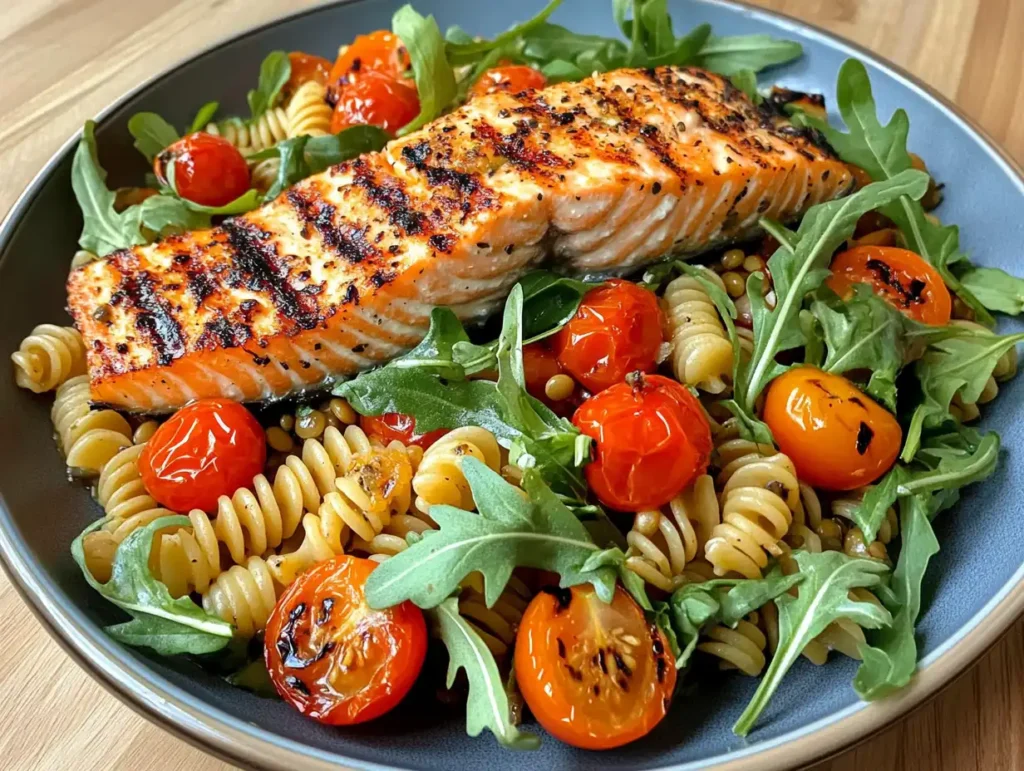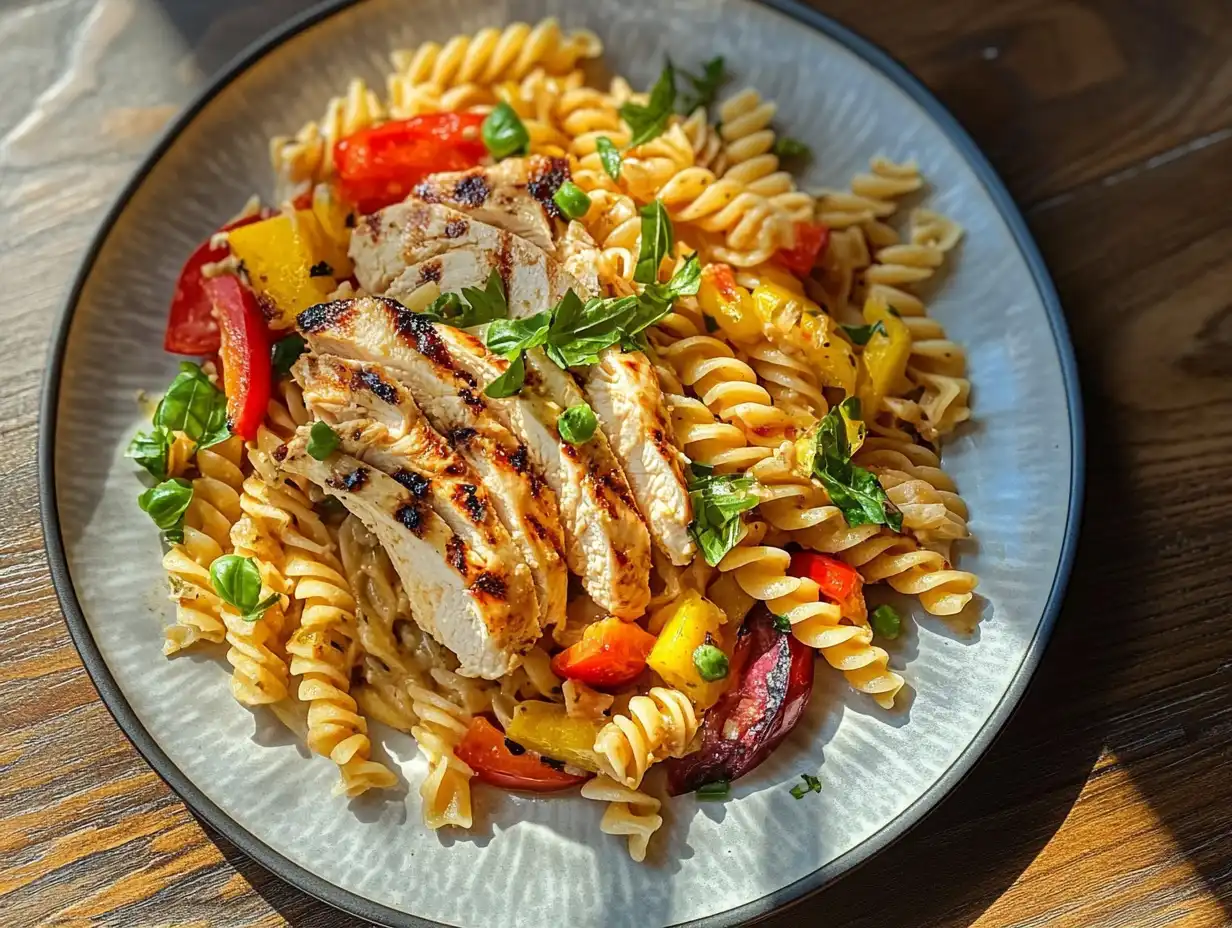Table of contents
Introduction
Many people wonder, what is the best pasta for weight loss? This question is central to balancing enjoyment with health goals.
Pasta is a staple comfort food enjoyed worldwide, but it often gets a bad rap when it comes to weight loss. Many people assume they need to eliminate pasta entirely from their diet to shed pounds, but that’s not necessarily true. With the right choices, pasta can be part of a healthy, weight-loss-friendly diet. In this article, we’ll explore the best types of pasta for weight loss, how to incorporate them into your meals, and practical tips to enjoy pasta without derailing your health goals.
Understanding Pasta and Weight Loss
Nutritional Profile of Pasta
Pasta is primarily a source of carbohydrates, offering about 200 calories per cup of cooked regular pasta. It also contains a modest amount of protein and very little fat. The nutritional profile can vary significantly based on the type of pasta, which is key when choosing the best options for weight loss.
The Carb and Calorie Debate
Carbohydrates are often misunderstood in weight loss discussions. While it’s true that overconsumption of carbs can lead to weight gain, the type and amount of carbohydrates you consume matter more than avoiding them altogether.
Can Pasta Fit Into a Weight Loss Diet?
Yes! Pasta can fit into a weight loss diet if consumed in moderation and paired with nutrient-dense ingredients. Opting for whole-grain or alternative pastas and controlling portion sizes are crucial strategies.
Types of Pasta
Whole Wheat Pasta
Whole wheat pasta is made from whole grains, retaining more fiber and nutrients compared to refined pasta. It has a nuttier flavor and firmer texture, making it a satisfying choice for weight loss. The high fiber content slows digestion, keeps you full longer, and helps regulate blood sugar levels.
Lentil and Chickpea Pasta
These legume-based pastas are packed with protein and fiber, making them excellent for weight loss and muscle maintenance. They’re naturally gluten-free and provide a rich, nutty flavor. Lentil and chickpea pastas are particularly useful for those on plant-based diets seeking alternatives to traditional pasta.
Konjac (Shirataki) Pasta
Shirataki pasta, made from the root of the konjac plant, is an ultra-low-calorie alternative. Sometimes called “miracle noodles,” this pasta is almost entirely fiber and contains less than 10 calories per serving. It’s an excellent choice for those on extremely calorie-restricted diets or following keto.
Edamame and Black Bean Pasta
Rich in protein and antioxidants, edamame and black bean pastas are popular among health enthusiasts. These pastas are higher in protein and lower in carbs than traditional options, making them suitable for high-protein diets.
Traditional Pasta with Modifications
While refined pasta isn’t ideal for weight loss, small portions paired with lean proteins and vegetables can still fit into a balanced diet. It’s all about moderation and pairing.
Low-Calorie Pasta Options

When deciding what is the best pasta for weight loss, choosing low-calorie options can make a significant difference. Alternatives like konjac (shirataki) pasta and spiralized vegetables, such as zucchini noodles or “zoodles,” are excellent choices for drastically cutting calories while still enjoying pasta dishes. For example, a cup of zucchini noodles contains about 20 calories compared to the 200 calories in traditional pasta.
Incorporating Vegetable-Based Pasta
Vegetable-based pasta substitutes, such as those made from spinach or carrots, combine the goodness of vegetables with the comfort of pasta. These options are often lower in calories and add extra nutrients to your meal.
Best Practices for Low-Calorie Pasta Meals
- Use a light, tomato-based sauce instead of cream or cheese-based sauces.
- Add plenty of vegetables to increase volume and reduce calorie density.
- Incorporate lean proteins like chicken, tofu, or shrimp for a balanced meal.
High-Protein Pasta
If you’re wondering, “What is the best pasta for weight loss?” protein-packed options are often the answer. Varieties like chickpea, lentil, and edamame pasta provide more protein and fiber than regular pasta, helping to keep you full longer and support muscle maintenance during weight loss. These options are especially great for individuals who exercise regularly or follow plant-based diets.

Benefits of High-Protein Pasta for Weight Loss
- Reduces hunger and curbs overeating.
- Supports muscle recovery and growth, especially beneficial for those who exercise regularly.
- Balances blood sugar levels, preventing energy crashes.
Best Protein-Packed Pasta Dishes
- Lentil pasta with a turkey Bolognese sauce.
- Chickpea pasta salad with grilled chicken and vegetables.
- Edamame pasta stir-fry with tofu and broccoli.
Gluten-Free Options
Why Gluten-Free Pasta May Help with Weight Loss
For individuals sensitive to gluten or those with celiac disease, gluten-free pasta can prevent digestive discomfort and inflammation, which might otherwise hinder weight-loss progress. These pastas are typically made from rice, corn, quinoa, or legumes and vary in nutritional profiles.
Popular Gluten-Free Choices
- Quinoa Pasta: High in protein and nutrients like magnesium and iron, quinoa pasta is a nutrient-dense option.
- Brown Rice Pasta: While slightly higher in calories than some alternatives, brown rice pasta is gentle on digestion and offers fiber.
- Legume-Based Pasta: Chickpea, lentil, and black bean pastas are naturally gluten-free and ideal for weight loss due to their high protein and fiber content.
Tips for Selecting Gluten-Free Pasta
- Look for options with minimal ingredients to avoid overly processed varieties.
- Choose whole-food-based pastas for better satiety and nutritional value.
Konjac (Shirataki) Pasta
What Makes Shirataki Pasta Special?
Shirataki pasta stands out as one of the best low-calorie pasta options for weight loss. Composed mainly of glucomannan fiber, it contains virtually no digestible carbs or calories, making it a popular choice for keto or calorie-restricted diets.
Preparing and Using Shirataki Pasta
- Rinse Thoroughly: Shirataki pasta often has a unique odor from its packaging liquid. Rinsing it under running water for a few minutes helps remove it.
- Dry and Sauté: Drying the noodles and quickly sautéing them in a nonstick pan improves their texture.
- Pair with Flavorful Sauces: Due to its mild taste, Shirataki pairs well with robust sauces like marinara, pesto, or peanut sauce.
Health Benefits
- Extremely low-calorie, making it easy to fit into any weight-loss plan.
- High in fiber, which promotes satiety and supports digestive health.
Whole Wheat Pasta
Why Choose Whole Wheat Pasta for Weight Loss?
Whole wheat pasta is a nutrient-dense alternative to refined pasta, offering more fiber, vitamins, and minerals. Fiber not only aids digestion but also helps you feel full, reducing the temptation to overeat.
Nutritional Advantages
- Higher in complex carbohydrates, leading to steadier blood sugar levels.
- Provides about 6 grams of fiber per serving, compared to 2 grams in traditional pasta.
Delicious Whole Wheat Pasta Ideas
- Vegetable Primavera: Toss whole wheat pasta with zucchini, bell peppers, and a light olive oil-based sauce.
- Whole Wheat Pesto Pasta: Pair with grilled chicken and a fresh basil pesto for a balanced meal.
Portion Control with Pasta
The Importance of Portion Control
Even the healthiest pasta options can derail weight-loss efforts if portion sizes are excessive. Sticking to a single serving size, typically around 1 cup of cooked pasta, can keep calorie intake in check.
Strategies for Managing Portions
- Measure Before Cooking: Use a food scale or measuring cups to ensure you’re not overestimating portions.
- Bulk Up with Vegetables: Add zucchini noodles or spiralized carrots to your pasta to increase volume without adding many calories.
- Serve with Protein and Healthy Fats: Balanced meals are more satisfying and prevent overeating.
Using Smaller Plates and Bowls
Serving your pasta on smaller plates or bowls can trick your mind into thinking you’re eating more, helping with portion control.
Pasta Pairing Tips
Choosing Healthy Sauces
The sauce you pair with your pasta can significantly impact its calorie count and nutritional value. Creamy or cheese-based sauces are often high in calories and saturated fats, making them less ideal for weight loss. Instead, consider:
- Tomato-Based Sauces: Marinara or arrabbiata are low-calorie and rich in antioxidants like lycopene.
- Pesto: Made with fresh basil, olive oil, and nuts, pesto adds flavor and healthy fats, though it should be used sparingly due to its calorie density.
- Olive Oil and Garlic: A simple drizzle of olive oil with garlic and herbs can be light yet flavorful.
Adding Vegetables
Vegetables are low in calories and high in fiber, making them perfect companions for pasta. Popular choices include:
- Zucchini, spinach, or kale for added greens.
- Mushrooms and bell peppers for a hearty, savory touch.
- Broccoli or cauliflower for crunch and nutritional value.
Incorporating Lean Proteins
Adding protein to your pasta helps balance the meal and keeps you fuller for longer. Excellent options include:
- Grilled Chicken: Lean and versatile, chicken complements most pasta dishes.
- Seafood: Shrimp, salmon, or scallops are light yet protein-rich additions.
- Plant-Based Proteins: Tofu, tempeh, or beans work well for vegetarians and vegans.
Balancing Macronutrients
The Role of Carbs in a Weight-Loss Diet
Carbohydrates are an essential part of a healthy diet, providing energy for daily activities. The key is choosing complex carbs, like those found in whole wheat or legume-based pasta, which are digested slowly and help maintain stable blood sugar levels.
Adding Protein and Healthy Fats
Balancing pasta dishes with protein and healthy fats is crucial for weight loss. Protein aids in muscle maintenance and satiety, while healthy fats from sources like olive oil or avocado enhance flavor and satisfaction.
Example of a Balanced Pasta Meal
- Base: Whole wheat or chickpea pasta.
- Protein: Grilled chicken or lentils.
- Vegetables: Sautéed spinach, tomatoes, and mushrooms.
- Fats: Drizzle with extra virgin olive oil and a sprinkle of nuts or seeds.
Pasta and Glycemic Index
Understanding Glycemic Index (GI)
The glycemic index measures how quickly a food raises blood sugar levels. Foods with a lower GI are better for weight loss as they provide sustained energy without causing spikes and crashes.
Pasta’s Glycemic Index
Interestingly, pasta has a relatively low GI compared to other carbohydrate sources, especially if cooked al dente. This makes it a better option for those managing blood sugar and energy levels.
Tips for Lowering Pasta’s GI
- Cook Al Dente: Pasta cooked to a firmer texture has a lower GI.
- Pair with Fiber and Protein: Adding vegetables and proteins lowers the overall glycemic load of the meal.
- Choose Whole Grain Options: Whole wheat and legume-based pastas naturally have a lower GI.
Meal Prep Ideas
Weight-Loss-Friendly Pasta Recipes
- Mediterranean Chickpea Pasta Salad: Toss chickpea pasta with cherry tomatoes, cucumber, olives, and feta for a high-protein, low-calorie dish.
- Zucchini Noodle Stir-Fry: Mix shirataki noodles or spiralized zucchini with lean chicken and a light soy sauce-based dressing.
- Lentil Pasta Bolognese: Replace traditional pasta with lentil pasta and pair it with a hearty tomato and turkey-based sauce.
Tips for Easy Meal Prep
- Cook in Bulk: Prepare multiple servings of pasta and portion them out for the week.
- Use Mason Jars: Layer pasta, vegetables, and sauce in jars for a quick grab-and-go option.
- Freeze Leftovers: Pasta dishes freeze well, making them ideal for batch cooking.
Common Mistakes to Avoid
Overeating Pasta
Even with healthier pasta options, overeating can still hinder weight loss. Portion control is critical, and pairing pasta with nutrient-dense ingredients helps you feel satisfied without overindulging.
Choosing High-Calorie Sauces
Cream-based sauces, cheese-heavy toppings, and excessive oils can add unnecessary calories. Stick to lighter sauces and limit high-fat additions like butter and cream.
Neglecting Balance in Meals
A common mistake is eating pasta alone without sufficient protein or vegetables. Balanced meals not only promote satiety but also provide essential nutrients for overall health.
Overcooking Pasta
Overcooked pasta has a higher glycemic index, which can cause blood sugar spikes. Always aim for al dente pasta to retain its low-GI benefits and firm texture.
FAQs
Is pasta bad for weight loss?
No, pasta is not inherently bad for weight loss. Choosing healthier options like whole wheat or lentil pasta, practicing portion control, and pairing it with nutrient-dense ingredients make it a viable option in a weight-loss diet.
What is the lowest-calorie pasta option?
Konjac (shirataki) pasta is one of the lowest-calorie options, with less than 10 calories per serving. It’s a great alternative for calorie-restricted diets.
Can I eat pasta every day and still lose weight?
Yes, but moderation is key. Stick to small portions, choose whole-grain or alternative pastas, and ensure the rest of your diet is balanced and calorie-controlled.
What is the best sauce for weight-loss pasta?
Tomato-based sauces like marinara or arrabbiata are low in calories and high in antioxidants, making them excellent for weight-loss pasta dishes.
Is gluten-free pasta healthier than regular pasta?
Not necessarily. While gluten-free pasta is suitable for those with gluten sensitivity, it’s not inherently healthier unless it’s made from nutrient-rich ingredients like quinoa or legumes.
How can I make pasta more filling without adding many calories?
Incorporate vegetables, lean proteins, and high-fiber ingredients to make pasta meals more filling and reduce the need for larger portions.
Related Recipes and Pasta Insights
Enhance your knowledge about pasta choices for weight loss with these related articles from Greedy Recipes:
- What Is the Closest Pasta to Ditalini?: Learn about pasta varieties that serve as excellent alternatives, perfect for fitting into a weight-loss diet.
- Mushroom Spinach Pasta: A Nutritious and Delicious Recipe: Discover a wholesome recipe combining the benefits of mushrooms and spinach in a satisfying dish.
- Is Capellini the Same as Angel Hair Pasta? Exploring Similarities and Differences: Dive into the subtleties of light and delicate pasta options to make healthier choices.
Conclusion
Pasta doesn’t have to be off-limits for weight loss. By selecting the right type of pasta, managing portion sizes, and pairing it with nutrient-dense ingredients, you can enjoy this beloved dish while achieving your health goals. Whole wheat, legume-based, and konjac pastas are all excellent options, and simple adjustments like al dente cooking and vegetable pairings can further enhance weight-loss benefits. Remember, balance and moderation are the keys to success.
